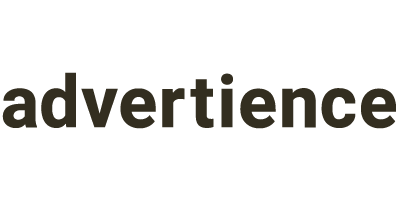Google Ad Grant Limitations: 4 Ways to Overcome Restrictions
By advertience | November 10, 2023 | Google Grant
Maximize your nonprofit’s impact with Advertience. Navigate Google Ad Grants limits effectively. Reach out for expert management solutions!

While generous, the Google Ad Grant program comes with complexities and constraints that may seem daunting at first. A strategic approach is essential to navigate the various stipulations of the Google Ad Grants, which are purposefully designed. These limitations encourage nonprofits to meticulously deliberate their advertising strategies, leading to more impactful advertisements that effectively engage potential supporters with their cause.
Google Ad Grants Limitation 1: Budget and Bids
Recipients of the Google Ad Grant are allocated a monthly advertising budget of $10,000, equating to a daily expenditure limit of $329. Note that this is a use-it-or-lose-it allowance; unused portions of the budget do not carry over to the following months.
Specific constraints also limit how much Ad Grantees can bid for ad placements. In the competitive landscape of search engine results pages (SERPs), where advertisers vie for visibility based on keywords, the cost-per-click (CPC) bid is critical for ad placement. Generally, higher bids lead to more prominent ad positions.
However, for organizations using Ad Grant accounts, there is a cap on the CPC at $2 for most keywords, meaning that participants cannot exceed this amount when bidding for clicks on their advertisements.
Advertience’s Solution: Careful Keyword Research
Navigating the intricacies of budget management within the Google Ad Grants program demands strategic finesse, particularly for a non-profit’s digital strategy. It’s essential to keep a close watch on the performance metrics of your ad campaigns throughout their active period to make the most of your $10,000 monthly allotment. Engage with a Google Grant expert from Advertience to masterfully apply these tactics. Our expertise extends beyond just optimization; we’re equipped to devise a comprehensive strategy to amplify the efficacy of your monthly budget fully.
Google Ad Grants Limitation 2: Keyword Rules
Google has set certain keyword restrictions to help nonprofits target search queries most beneficial to their goals. These include:
- Exclusion of Single-Word Keywords: Google requires the use of multi-word phrases, except for your own branded terms. All other single-word keywords must be paused using the appropriate filters.
- Avoidance of Generic Keywords: Keywords must be closely related to your cause for specificity and relevance. You are required to halt or eliminate keywords that are too broad and do not reflect clear user intent or delineate a distinct audience, such as “charity” or “volunteer.”
- Minimum Quality Score Requirements: Google Ads campaigns must use only keywords with a Quality Score of 3 or above. The Quality Score assesses the relevance and effectiveness of your keywords, considering factors such as expected click-through rate (CTR), ad relevance, and landing page quality. A higher Quality Score can result in better ad placements and more cost-effective clicks.
Adhering to these guidelines helps you reach potential supporters who are actively searching for content related to your cause, thereby engaging a more qualified audience and enhancing conversion potential.
Advertience’s Solution: Careful Keyword Research
At the core of Advertience’s approach lies the meticulous art of keyword research. To deftly maneuver through the constraints of the Google Ad Grants program, selecting the right keywords and continually analyzing their performance is paramount. This strategic keyword refinement empowers nonprofits to transform Google Ad Grants’ limitations into formidable assets. For those looking to deepen their mastery, professional expertise is readily accessible to guide you through this nuanced process.
Google Ad Grants Limitation 3: Types of Ads and Ad Positioning
The Google Ad Grants program is limited to text-only advertisements, so organizations cannot use image or video ads in this account, which may affect the visual impact of their advertising efforts.
Additionally, access to the Google Display Network (GDN) is not provided, precluding display prospecting and remarketing capabilities. Our comprehensive guide to nonprofit advertising explains that remarketing ads ‘follow’ users across the web after they visit a site without completing an action, such as abandoning a shopping cart.
For cause-focused organizations, the ability to employ such marketing strategies is invaluable for re-engaging individuals who still need to complete donations and for keeping upcoming events at the forefront of their minds.
It should also be noted that ads running through Google Ad Grants may be positioned below those of paying advertisers, which can lead to reduced visibility on search engine results pages.
Advertience’s Solution: Well-Written Ads
Crafting an effective campaign within the Google Ad Grants program constraints means honing in on compelling text advertisements. Despite the lack of visual elements, the sheer volume of daily searches on Google—around 3.7 billion—opens up a vast audience of potential supporters.
To maximize the impact of your campaigns, invest time in creating high-quality ad content. If the limitation to text-only ads is a significant hurdle, nonprofits should consider the possibility of expanding their advertising efforts beyond the Google Ad Grants program. By setting up a paid Google Ads account, you can tap into the power of the Google Display Network (GDN), which allows for more visually compelling display campaigns. This approach can complement your text ads and provide a more immersive experience for your audience.
Google Ad Grants Limitation 4: Location Targeting
The Google Ad Grants program requires that ads be displayed in locales relevant to your organization, usually the country where it operates. If your cause has international relevance, you can broaden your advertising to multiple countries.
This may seem restrictive, but it actually enhances the efficacy of your campaigns by focusing efforts on potential donors, volunteers, and supporters more likely to engage with your organization, thereby optimizing your budget.
Advertience’s Solution: Effective Targeting
To effectively maneuver within the confines of the Google Ad Grants program, it’s crucial to grasp the intricacies of Google’s targeting capabilities or to seek expertise from a specialist at Advertience who can fine-tune your strategy for maximum efficacy. By becoming adept with Google’s suite of targeting tools, you can refine your campaigns to laser-point focus, turning apparent restrictions into advantageous opportunities for growth and engagement.
Working with Advertience to overcome the Google Ad Grants Restrictions. Advertience, a leading Google grant management agency, specializes in maximizing the potential of Google Grant services for nonprofits. By deftly navigating the program’s intricacies—from budget constraints and keyword selection to ad placement and location targeting—Advertience ensures organizations harness the full $10,000 monthly advertising boon. Whether it’s a Toronto-based charity seeking to increase its local presence or a Vancouver nonprofit aiming to broaden its reach, Advertience tailors our Google Grant management strategies to meet each client’s unique needs, optimizing campaigns to elevate their missions with precision and effectiveness. Connect with Advertience today and unlock the power of Google Grants for your organization.




